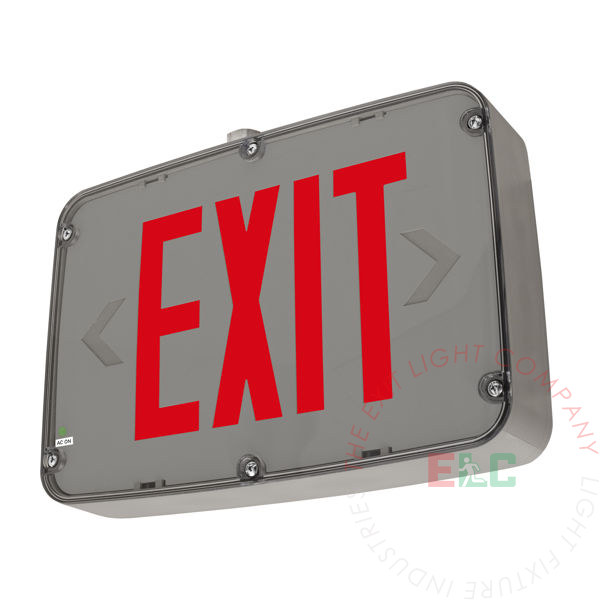NEMA ratings and Class 1 Division 1 and 2 ratings are two different systems used to classify enclosures or areas based on their environmental and safety requirements, particularly when it comes to protection against hazards. Here’s a breakdown of each:
NEMA Ratings
NEMA (National Electrical Manufacturers Association) ratings classify electrical enclosures based on their ability to protect against various environmental conditions. These ratings focus primarily on physical protection from dust, water, and other foreign objects. Examples of NEMA ratings include:
- NEMA 1: General-purpose indoor protection against dust and light.
- NEMA 4: Protection against windblown dust and rain, splashing water, and hose-directed water; often used for outdoor applications.
- NEMA 4X: Similar to NEMA 4, but also resistant to corrosion.
- NEMA 6: Protects against occasional submersion in water.
NEMA ratings generally do not specifically address hazardous or explosive atmospheres, though some enclosures may be suitable for use in such environments depending on their design.
Class 1 Division 1 and 2 Ratings
The Class and Division system is a method used by the National Electric Code (NEC) and similar standards to describe hazardous locations where explosive or flammable gases, vapors, or dusts might be present. The focus here is on the likelihood of an explosive atmosphere being present in an area.
- Class 1: Refers to locations where flammable gases or vapors are present.
- Division 1: The hazardous substance (gas, vapor, or liquid) is present continuously or frequently under normal operating conditions. The risk is high, and explosive atmospheres are expected to be present.
- Division 2: The hazardous substance is only present in abnormal conditions (e.g., an accidental release or equipment malfunction). The risk is lower compared to Division 1.
Class 1 Division 1 indicates a very high level of hazard since explosive or flammable gases are present most of the time. Class 1 Division 2 indicates a lower level of hazard where the risk is only during abnormal conditions.
Key Differences
- Purpose:
- NEMA: Focuses on environmental protection (dust, water, corrosion).
- Class/Division: Focuses on protection from hazardous or explosive atmospheres.
- Hazardous Environment:
- NEMA: Does not explicitly deal with explosive hazards.
- Class 1 Division 1 and 2: Explicitly indicates the presence of explosive gases or vapors.
- Use Cases:
- NEMA: Suitable for non-hazardous areas and general protection.
- Class 1 Division 1 and 2: Required for areas where explosive or flammable substances might be present.
In short, while NEMA ratings address protection against environmental factors, Class 1 Division 1 and 2 ratings focus on the safety of equipment in areas with explosive hazards. Equipment in hazardous locations often needs to comply with both NEMA and Class/Division requirements.
NFPA 70 NEC Hazardous Locations Classes, Divisions and Groups
| cLASS | DIVISION | GROUP |
|---|---|---|
| I – Flammable gases or vapors may be present | 1 – Ignitable concentrations of hazards exist under normal operation conditions and/or where the hazard is caused by frequent maintenance or repair work or frequent equipment failure 2 – Ignitable concentrations of hazards exist under abnormal operation conditions | Group A – Acetylene Group B – hydrogen, butadiene, ethylene oxide, propylene oxide and acrolein Group C – Ethylene, cyclopropane and ethyl ether Group D – Acetone, ammonia, benzene, butane, ethanol, gasoline, hexane, methane, methanol, methane, naphtha, natural gas, propane and toluene |
| II – Combustible dust may be present | 1 – Ignitable concentrations of hazards exist under normal operation conditions and/or where the hazard is caused by frequent maintenance or repair work or frequent equipment failure 2 – Ignitable concentrations of hazards exist under abnormal operation conditions | E – Combustible metal dusts: aluminum, commercial alloys and magnesium F – Combustible carbonaceous dusts: carbon black, charcoal, coal and coke dusts G – Other combustible dusts: Chemicals, flour, grain, plastic and wood |
| III – Easily ignitable fibers or flyings may be present | 1 – Ignitable concentrations of hazards exist under normal operation conditions and/or where the hazard is caused by frequent maintenance or repair work or frequent equipment failure 2 – Ignitable concentrations of hazards exist under abnormal operation conditions | N/A |
NFPA 70 NEC Zone Classification System
The Zone Classification System serves as an alternative to the traditional Class and Division system, offering an American adaptation of the International Electrotechnical Commission’s (IEC) Zone system. This approach retains the wiring methods and protection techniques outlined in the NEC (National Electrical Code). Zones categorize the type of hazardous material—whether gas or dust—and assess the likelihood of its presence in ignitable concentrations in the surrounding atmosphere. Unlike the Class and Division system, which focuses on normal versus abnormal conditions, the Zone system is based on how frequently the hazardous material is present.
| NFPA 70 NEC Hazardous Locations Zones | |
|---|---|
| Gases, Vapors and Mists | 0 – Ignitable concentrations of flammable gases or vapors which are present continuously or for long periods of time |
| 1 – Ignitable concentrations of flammable gases or vapors which are likely to occur under normal operating conditions; may exist frequently because of repair/maintenance operations or leakage; or equipment is operated in a manner that equipment breakdown/faulty operations could result in the release of ignitable concentrations of flammable gases or vapors and failure of the equipment | |
| 2 – Ignitable concentrations of flammable gases or vapors which are not likely to occur under normal operating conditions and if they do will only persist for a short period of time; or volatile flammable liquids, gases, or vapors are confined within closed containers/systems and can escape only as a result of an accidental rupture; or volatile flammable liquids, gases, or vapors are normally prevented by positive mechanical ventilation, but may become hazardous due to system failure | |
| Dusts and Fibers/Flyings | 20 – Combustible dusts or ignitable fibers/flyings are present continuously or for long periods of time |
| 21 – Combustible dusts or ignitable fibers/flyings are likely to occur under normal operating conditions; or may exist frequently because of repair/maintenance operations or leakage; or equipment is operated in a manner that breakdown/faulty operations could result in the release of ignitable concentrations of combustible dust or fibers/flyings and failure of the equipment | |
| 22 – Combustible dusts or ignitable fibers/flyings are likely to occur under normal operating conditions; or may exist frequently because of repair/maintenance operations or leakage; or equipment is operated in a manner that breakdown/faulty operations could result in the release of ignitable concentrations of combustible dust or fibers/flyings and failure of the equipment | |
NFPA 70 NEC Hazardous Location Groups
| Group I | Group II | Group III |
|---|---|---|
| Mines susceptible to firedamp (flammable mixture of gases naturally occurring in a mine) | Explosive gas atmospheres other than mines susceptible to firedamp – Group II equipment is subdivided into three subgroups | Explosive dusts – Group III equipment is subdivided into three subgroups |
| A – Atmospheres containing acetone, ammonia, ethyl alcohol, gasoline, methane, propane, or gases/vapors of equivalent hazard | A – Atmospheres containing solid particles and fibers greater than 500 microns that could be suspended in air and settle out | |
| B – Atmospheres containing acetaldehyde, ethylene, or gases/vapors of equivalent hazard | B – Atmospheres containing combustible dusts other than combustible metal dusts | |
| C – Atmospheres containing acetylene, hydrogen, or gases/vapors of equivalent hazard | C – Atmospheres containing combustible metal dusts |
Browse and Shop Harsh Environment Egress Lighting


